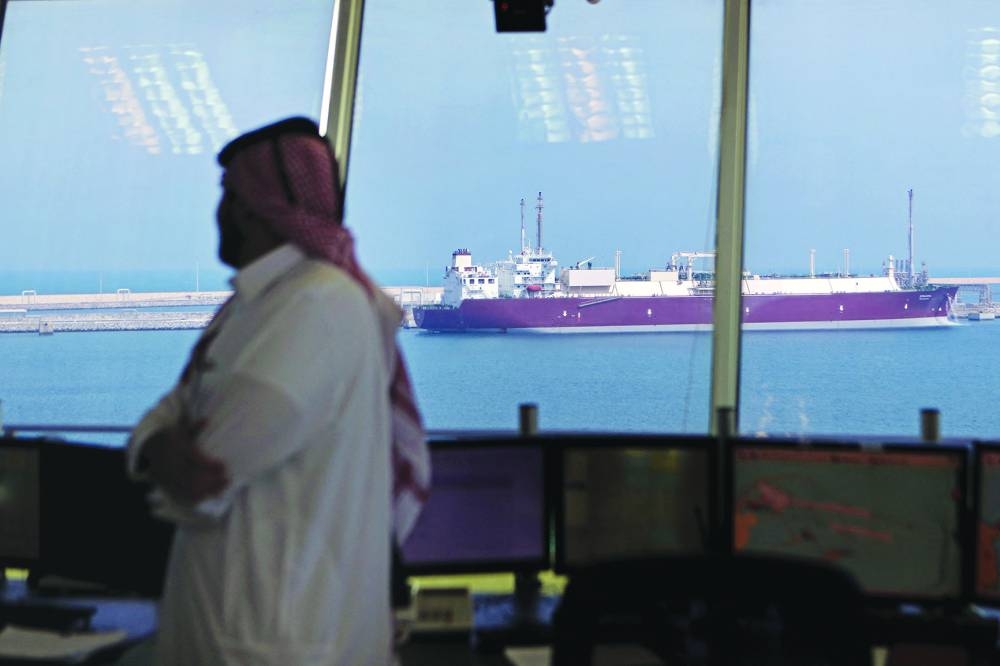Qatar has made significant strides in the energy sector over the past decade, thanks to the guidance and unlimited support of His Highness the Amir, Sheikh Tamim bin Hamad al-Thani.
Significant accomplishments include boost in liquefied natural gas production, expansion of LNG facilities and diversification of markets, investment in renewable energy, energy efficiency initiatives, research and development and carbon capture and storage.
In the past decade, Qatar has implemented world-scale projects to boost its liquefied natural gas production.
Qatar is the world's largest exporter of LNG and has consistently expanded its production capacity. Qatari LNG now reaches all continents and the country holds the enviable record of uninterrupted supplies to customers, even during challenging times.
The country has actively pursued market diversification for its LNG exports. It has expanded its reach to new customers and regions, including Asia, Europe, and the Americas. Qatar has established long-term supply agreements with various countries, securing its position as a reliable LNG supplier.
In 2021, Qatar announced the North Field Expansion project, which comprises North Field South (NFS) and North Field East (NFE) that will increase Qatar’s LNG production capacity from the current 77 MTPY to 126 MTPY by 2026 or 2027.
Global energy majors such as TotalEnergies, ExxonMobil, Shell, Eni and ConocoPhillips are QatarEnergy’s partners in the multi-billion dollar North Field expansion project, the largest LNG development in global history.
This unique project is characterised by the highest health, safety, and environmental standards, including carbon capture and sequestration, to reduce the project’s overall carbon footprint to the lowest levels possible.
The North Field expansion plan includes six LNG trains, of which four trains will be part of the North Field East and the remainder part of the North Field South project.
The North Field expansion will provide significant benefits for all sectors of the Qatari economy during the construction phase and beyond.
Ras Laffan, located on Qatar's northern coast, is now home to the state-of-the-art LNG infrastructure, including massive LNG export terminals.
In March 2022, His Highness the Amir Sheikh Tamim bin Hamad al-Thani inaugurated the Barzan Gas Plant in a special ceremony held at the Ras Laffan Industrial City.
The Barzan Gas Plant is capable of producing almost 1.4bn standard cubic feet of sales gas per day for local power generation and water desalination; 2,000 tonnes of ethane per day as feedstock for the local petrochemicals industry; 1,500 tonnes per day of liquid petroleum gas (LPG) for export to international markets; 30,000 barrels of condensate per day for processing in the Laffan Refinery and export to international markets; and 3,500 tonnes of sulphur per day for export to international markets.
It will also produce associated hydrocarbon products for supply to local refinery and petrochemical industries as well as for export to international markets.
Qatargas operates the Barzan Gas Plant on behalf of its shareholders: QatarEnergy (93%) and ExxonMobil (7%).
Qatar owns a fleet of LNG carriers, enabling efficient transportation of LNG to global markets. Qatari companies, such as Nakilat, have made substantial investments in building and managing LNG vessels, ensuring a robust shipping infrastructure.
Industries Qatar (IQ) and Mesaieed Petrochemical Holding (MPHC) have already given their approval to Qatar Vinyl Company (QVC) for a new PVC (polyvinyl chloride) project with 350,000 tonnes per annum capacity at an estimated cost of $239mn.
Qatar has been committed to environmental sustainability in its LNG operations. It has implemented advanced technologies and practices to reduce greenhouse gas emissions, improve energy efficiency, and minimise the environmental impact of LNG production and transportation.
In October last year, Qatar’s first and one of the region’s largest solar plants was inaugurated by His Highness the Amir at Al Kharsaah.
The multi-billion dollar 800MW Al Kharsaah Solar PV Power Plant (KSPP) was constructed on a 10sq km land area and can provide the national grid with about 10% of peak electricity demand.
Qatar has invested in research and innovation to enhance its LNG industry. Institutions like Qatar University and the Qatar Science & Technology Park have collaborated with international partners and conducted research in areas such as LNG technologies, carbon capture and storage, and clean energy solutions.
Qatar has played a leading role in developing and implementing advanced LNG technologies. It has continuously improved its LNG production processes, including the utilisation of integrated production facilities, optimised liquefaction techniques, and efficient management of LNG projects.
The decade also saw significant achievements in the Dolphin Energy Project, which recorded the first gas flow from Qatar to the UAE on July 10, 2007.
Dolphin Energy’s major strategic initiative, the Dolphin Gas Project, involves the production and processing of natural gas from Qatar’s North Field, and transportation of the dry gas by sub-sea export pipeline from Qatar to the UAE, which began in July 2007.
Undoubtedly, these achievements have solidified Qatar's position as a global LNG powerhouse and contributed to its economic growth and international influence in the energy sector.

A view of the Ras Laffan Industrial City, Qatar's principal site for the production of liquefied natural gas and gas-to-liquids (file). Qatar has made significant strides in the energy sector over the past decade, thanks to the guidance and unlimited support of His Highness the Amir, Sheikh Tamim bin Hamad al-Thani.

